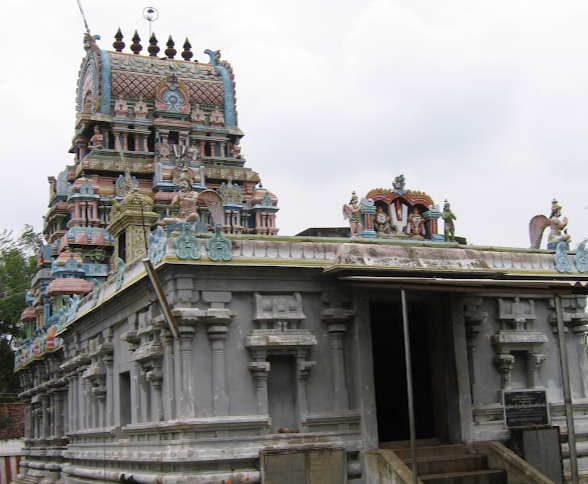Origin/History :-
The Sri Seganmaal Ranganatha Perumal Temple, like many of the Divya Desam temples, is believed to have been built by the Chola dynasty. The temple's construction is attributed to the early mediaeval Cholas, who were great patrons of architecture and the Vaishnavite tradition. The exact date of its construction is not well-documented, but it is believed to have been established between the 7th and 9th centuries during the height of Chola rule.
Puranic Significance :-
All the sages and devas sought protection from Lord Vishnu to maintain the stability of the world. To fulfil this request, Lord Vishnu decided to take the Varaha incarnation. Concerned about his departure, Goddess Mahalakshmi asked what she should do if he left her. Lord Vishnu reassured her by instructing the divine serpent, who serves as his bed, to go to Palasavanam and meditate on him. He also mentioned that Lord Shiva would join them and promised to return after defeating the demon.
This place is known as Tiruthetri Ambalam in Kaliyuga because of this divine promise. Lord Vishnu also foretold that his staunch devotee, Sri Bhashyakara, would bring 108 scholars initiated into Vaishnavism to this place, and he assured that he would take care of and protect all beings.
Afterward, Lord Vishnu descended to Patala Loka, where he defeated the demon Hiranyaksha. After rescuing the earth and restoring it to its original place, Lord Vishnu returned to Palasavanam, granting darshan to both Mahalakshmi and Lord Shiva. He rested there after the battle, with his beautiful red eyes half-closed. This is why Lord Vishnu is praised as Senganmal Ranganathar at this temple.
Uniquely, this temple is the only one among the 108 Divya Desams referred to as "Ambalam," a term usually associated with Shiva temples. Worshiping Lord Vishnu here is considered equivalent to worshipping him at Srirangam. In this east-facing temple, Lord Vishnu is depicted in a reclining posture on the Adisesha bed, with four hands. His head and right hand rest on a wooden stand, while his left hand is placed on his hip. Goddess Sridevi is positioned near his head, and Mother Bhoodevi is near his feet. Devotees strongly believe that Lord Vishnu's grace elevates them to royal positions, and prayers for such blessings are promptly answered by the Lord.
Although the Lord is in a reclining posture, his eyes are always wide open. The Lord at this place is known as Senkann Maal, meaning "the one with reddish eyes." These red eyes are believed to be the result of a vigorous dance or the fact that he never closes his eyes, even while resting. Despite his sleeping posture, Lord Vishnu remains vigilant, guarding his devotees with yoga maya, and observing the world's happenings through his Sun-like eyes.
